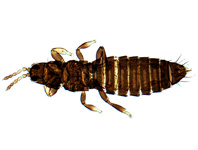Abstract
The Galah (Eolophus roseicapilla) is a pink-and-grey cockatoo, widespread in and endemic to Australia, and now familiar as a cage bird world-wide. It has three currently recognised subspecies: roseicapilla Vieillot, 1817 in the Australian west, kuhli Mathews, 1912 in the far north, and albiceps Schodde, 1989 in the east (Schodde 1997; Higgins 1999; Dickinson & Remsen 2013; del Hoyo & Collar 2014; Engelhard et al. 2015). The northern subspecies, kuhli, is not involved in the issue of type identity of roseicapilla, and so is not considered further here. First to distinguish east and west subspecies was G.M. Mathews (1912). Without explanation then or later, Mathews arbitrarily applied the senior specific name, Cacatua roseicapilla Vieillot, 1817 and its two objective synonyms based on the same type—eos Kuhl, 1820 and rosea Vieillot, 1822—to the eastern subspecies, and introduced the new name assimilis for the then supposedly undescribed western form. Mathews’ lead was followed unquestioningly until the late 1980s when Schodde (1989) and Rowley (1990: 3) concluded that the type of Vieillot’s roseicapilla was of the western subspecies, collected by the Baudin expedition in the region of Shark Bay on the mid-western Australian coast. Rowley (l.c.), but not Schodde (l.c.) contrary to Rowley’s reference, went further to claim that it had been taken by François Péron in 1803, presumably on the brief return visit of Baudin in Le Géographe to Shark Bay en route to France. This left the eastern subspecies un-named, which Schodde (l.c.) accordingly described as albiceps.
References
del Hoyo, J. & Collar, N.J. (2014) HBW and BirdLife International Illustrated Checklist of the Birds of the World. 1: Non-passerines. Lynx Edicions, Barcelona, 903 pp.
Dickinson, E.C. & Remsen, J.V. Jr. (Eds.) (2013) The Howard and Moore Complete Checklist of the Birds of the World. 4th Edition. 1 Non-passerines. Aves Press, Eastbourne, xlvii + 461 pp.
Engelhard, D., Joseph, L., Toon, A., Pedler, L. & Wilke, T. (2015) The rise (and demise?) of subspecies in the Galah (Eolophus roseicapilla), a widespread and abundant Australian cockatoo. Emu, 115, 289–301.
http://dx.doi.org/10.1071/MU15018Gammage, B. (2009) Galahs. Australian Historical Studies, 40, 275–293.
http://dx.doi.org/10.1080/10314610903067094Hellmayr, C. (1916) Weiteres zur Avifauna von Timor. Novitates Zoologicae, 23, 96–111.
Higgins, P.J. (Ed.) (1999) Handbook of Australian, New Zealand and Antarctic Birds. Vol. 4. Parrots to Dollarbird. Oxford University Press, Melbourne, 1248 pp.
Johnstone, R.E. (2001) Checklist of the birds of Western Australia. Records of the Western Australian Museum, 63 (Supplement), 75–90.
Johnstone, R.E. & Storr, G.M. (1998) Handbook of Western Australian Birds. 1—Non-passerines. Western Australian Museum, Perth, ix + 436 pp.
Mathews, G.M. (1912) A reference-list to the birds of Australia. Novitates Zoologicae, 18, 171–446.
Mathews, G.M. (1917) The Birds of Australia. Vol. 6. Witherby & Co., London, xix + 516 pp.
Péron, F. & de Freycinet, L. (1807–1816) Voyage de découvertes aux Terres Australes, exécuté par ordre de Sa Majesté l’Empereur et Roi, sur les Corvettes Le Géographe, Le Naturaliste, et la goellette Le Casuarina, pendant les Années 1800, 1801, 1802, 1803 et 1804. 3 volumes. Imprimerie Impériale, Paris, xv + 496 pp., xxxi + 471 pp. & xvi + 576 pp.
Peters, J.L. (1937) Check-list of Birds of the World. 3. Harvard University Press, Cambridge, MA, 311 pp.
Rowley, I. (1990) Behavioural Ecology of the Galah (Eolophus roseicapillus) in the wheatbelt of Western Australia. Surrey Beatty & Sons, Chipping Norton, New South Wales, xii + 188 pp.
Schodde, R. (1989) New subspecies of Australian birds. Canberra Bird Notes, 13, 119–122.
Schodde, R. (1997) Cacatuidae. In: Houston, W.W.K. & Wells, A. (Eds.), Zoological Catalogue of Australia. 37.2. CSIRO Publishing, Melbourne, pp. 64–108.
Serventy, D.L. & Whittell, H.M. (1976) The Birds of Western Australia. 5th Edition. University of Western Australia Press, Perth, 481 pp.
Temminck, C.J. & Laugier, M. (1821) Nouveau Recueil de Planches Coloriées d’Oiseaux. Livraison 14. Dufour & d’Ocagne, Paris, 6 pls.
Vallance, T.G., Moore, D.T. & Groves, E.W. (2001) Nature’s Investigator The Diary of Robert Brown in Australia, 1801–1805. Australian Biological Resources Study, Canberra, xii + 666 pp.
Vieillot, L.P. (1817) Kakatoès. In: Nouveau Dictionaire d’ Histoire Naturelle, appliquée aux arts, à l’Agriculture, à l’Économie rurale et domestique, à la Médecine, etc. Vol. 17. Nouvelle Édition. Déterville, Paris, pp. 6–13.
Vieillot, L.P. (1822) La Galerie des Oiseaux. (Ill. P. Oudart). 1. pt. 2. Constant-Chantpie, Paris, pl. 25 (livraison 8).
Vigors, N.A. & Horsfield, T. (1827) A description of the Australian birds in the collection of the Linnean Society: with an attempt at arranging them according to their natural affinities. Transactions of the Linnean Society of London, 15, 170–331.
http://dx.doi.org/10.1111/j.1095-8339.1826.tb00115.xVoisin, C. & Voisin, J.-F. (2008) Liste des types d’oiseaux des collections du Muséum national d’Histoire naturelle de Paris. 16: Perroquets (Psittacidae). Zoosystema, 30, 463–499.
Whittell, H.M. (1954) The Literature of Australian Birds: a History and Bibliography of Australian Ornithology. Part 1. A history of Australian ornithology 1618 to 1850. Paterson Brokensha, Perth, 116 pp.

